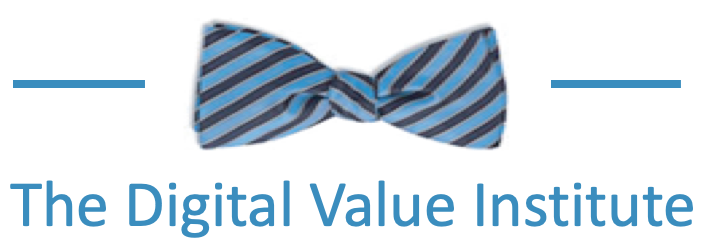Reports
Information Governance Roadmap
- How to manage information as an asset?
Effective customer engagement, business operations, and compliance relies on information availability, completeness, and trustworthiness. Information Governance seeks to meet the needs of the total organization (line of business, IT, and Compliance) with optimized information management practices.
Information is structured or unstructured data that has meaning to people. Our use of the term Information governance encompasses, therefore, both data and content. The analyst Gartner defines information governance as the specification of decision rights and an accountability framework to ensure appropriate behavior in the valuation, creation, storage, use, archiving and deletion of information. It includes the processes, roles and policies, standards and metrics that ensure the effective and efficient use of information in enabling an organization to achieve its goals. Software is therefore not a silver bullet for information governance.
Good information governance depends on good data governance. Accurate and trustworthy data is key to any organization, but also to ensure access and control of unstructured content such as reports, plans, budgets, etc. With poor data governance we end up with poor information governance.
Download the report to get a roadmap for success.
Digital Journey Roadmap
- How to transform your organization for the digital age?
The Digital Value Institute has precipitated hundreds of C-level conversations aimed at unlocking the accumulated wisdom of the global leadership community summarizing lessons learned leading in an era where uncertainty has become a central feature of modern capitalism.
Some characterize the contemporary environment using the acronym VUCA—volatile, uncertain, complex, and ambiguous. The Oxford University Executive Education program prefers TUNA - Turbulent-Uncertain-Novel-Ambiguous. Whatever acronym you use, however you describe the world you operate in, your digital transformation initiative must embrace the reality that the external environment changes rapidly and unpredictably.
Cheryl Smith, the former CIO at KeySpan, McKesson & West Jet argues that this uncertainty mandates creating:
(New) Digital Methodology
(New) Investment Case
(New) Role for IT
This in turn will require:
Substantial IT training/retraining
New financial models
New roles for the business
Download the report to get a roadmap for success.
Digital Workplace Roadmap
- How to better connect, information, and knowledge?
Much attention has been focused on the technologies associated with creating expectation-exceeding customer experiences. Not so much attention or investment has been allocated to the foundational employee experiences and skill sets that enable such transformed customer experiences.
It stands to reason that an organization undertaking a digital transformation requires a work environment [workplace] and employee base [workforce] that has been, or is in the process of being, digitally transformed as well. We asked therefore 500 senior IT executives working in large organizations headquartered in North America; 225 state and local government IT professionals working in the State of Florida and 75 retired operating executives [i.e., non-IT] living in the Northeast:
When You Hear the Phrase, “Digital Workplace”
What is the first Thing / Image that comes to mind?
A variety of answers ensued. Some cited the existing workplaces at pioneering companies like Apple, Google or Netflix. Others pointed to emerging hybrid co-working spaces [e.g., We Work]. Some focused on mobility [i.e., work from every/anywhere – Starbucks, the car while driving or being driven autonomously, National Parks, Baseball/football stadiums, amusement venues, and restaurants].
In the industrial age it was thought [ala the scientific management approach developed by Frederick W. Taylor] that a centrally managed, top down work process was optimal. Today knowledge workers are encouraged to discover their own paths to business effectiveness.
Download the report to get a roadmap for success.
Digital Business Roadmap
- How to better engage customers in a digital age?
Who remembers the “Dot.com Era”? Where were you in your career trajectory during this supposedly halcyon time of wholesale tech over-exuberance and naivete? A golden age when new technology was almost universally viewed as a “good thing” and technologists were hailed as heroes. An age when “eye balls” [i.e., customer touches] ruled and profits didn’t really matter.
Same question in a different temporal envelope - who remembers the “Y2K moment” – a brief technology hiccup when a design oversight induced by the limitations and economics of existing technology required a massive re-tooling/re-thinking of technology architectures.
What most do not realize is that these two moments in technology history occurred SIMULTANEOUSLY. We were simultaneously excited and threatened by technology.
Fast forward to the present. Big picture historians/futurists and strategic planners see similarities between our current situation and the dot.com/Y2K confluence. We exist at a moment of unprecedented technology opportunity. The technology stack available to virtually all market participants is capable of delivering exponential improvements in cost and functionality. Simultaneously, technology has fallen out of favor with regulators, legislators, many senior executives and broad swatches of the general public.
The challenge facing all those who would create value with technology is how do we generate positive forward momentum? Download the report to get a roadmap for success.
Digital Strategy Roadmap
- Where should your business be going?
Psychologists and therapists [without violating patient privacy] document that “digitization” in general and associated “digital technologies” in particular have been a recurring source of executive strategic angst. In sequence C-Suites have feared being:
“Kodak-ed” [i.e., failing to jump to the next technological wave];
“Netflix-ed” [i.e., failing to adapt to changing customer buying patterns];
“Amazon-ed” [i.e., having digital competitors render product/services irrelevant];
“TESLA-ed” [i.e., having charismatic outsiders co-opt critical destination points on digital horizon];
“UBER-ed” [i.e., offering sub-par customer experiences]; and most recently
“AI-ed” [i.e., having algorithmic competitors outsmart incumbent offerings]
How do you avoid this? Download the Digital Value Institute’s 4-step roadmap for establishing a digital strategy.





